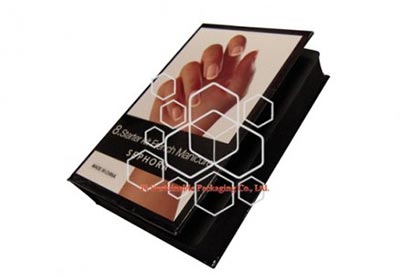What is the best plastic for cosmetic packaging?
Jul 10,2024 | Views: 839
Choosing the best plastic for cosmetic packaging depends on various factors, including product compatibility, aesthetics, durability, and environmental impact. Here are some of the most commonly used plastics in cosmetic packaging:
Common Uses: Bottles for shampoos, conditioners, lotions, and other liquid products.
Common Uses: Containers for creams, lotions, and serums.
Common Uses: Jars, caps, and closures for a range of cosmetic products.
Common Uses: Squeeze tubes for creams, gels, and toothpaste.
Common Uses: High-end cosmetic containers for creams, serums, and perfumes.
Common Uses: Compact cases, jars, and containers for powder products.
Common Uses: Occasionally used for specialty packaging where durability and flexibility are required.
Aesthetics: Choose materials that enhance the product's appearance and appeal to the target audience.
Sustainability: Consider the environmental impact and opt for recyclable or biodegradable options where possible.
Cost: Balance between the cost of materials and the desired quality and appearance.
Biodegradable Plastics: Made from renewable resources like corn starch or sugarcane.
Recycled Plastics: Utilizing recycled PET (rPET) or other recycled materials.
Glass: Though not a plastic, glass is a sustainable and premium alternative for certain products.
Selecting the right plastic for cosmetic packaging involves balancing the product’s needs, brand aesthetics, and sustainability goals.
Prev: What are custom cosmetic boxes?
Next: What is the best packaging for shipping jewelry?
1. Polyethylene Terephthalate (PET or PETE)
Benefits: PET is lightweight, strong, and transparent. It provides a good barrier against moisture and gases, which helps preserve the contents.Common Uses: Bottles for shampoos, conditioners, lotions, and other liquid products.
2. High-Density Polyethylene (HDPE)
Benefits: HDPE is known for its strength and durability. It's resistant to impact, moisture, and chemicals, making it suitable for a variety of products.Common Uses: Containers for creams, lotions, and serums.
3. Polypropylene (PP)
Benefits: PP is robust, heat-resistant, and can withstand various chemical compositions. It's also lightweight and versatile in design.Common Uses: Jars, caps, and closures for a range of cosmetic products.
4. Low-Density Polyethylene (LDPE)
Benefits: LDPE is flexible, making it ideal for squeeze tubes and bottles. It’s also resistant to moisture and chemicals.Common Uses: Squeeze tubes for creams, gels, and toothpaste.
5. Acrylic (Polymethyl Methacrylate or PMMA)
Benefits: Acrylic offers a glass-like appearance, providing a premium look and feel. It's also durable and shatter-resistant.Common Uses: High-end cosmetic containers for creams, serums, and perfumes.
6. Polystyrene (PS)
Benefits: PS is clear and rigid, providing a glass-like appearance. However, it's less durable than other plastics.Common Uses: Compact cases, jars, and containers for powder products.
7. Polyvinyl Chloride (PVC)
Benefits: PVC is versatile and durable but not as commonly used due to environmental concerns and potential health risks associated with certain additives.Common Uses: Occasionally used for specialty packaging where durability and flexibility are required.
Considerations for Choosing Plastic:
Product Compatibility: Ensure the plastic does not react with the product.Aesthetics: Choose materials that enhance the product's appearance and appeal to the target audience.
Sustainability: Consider the environmental impact and opt for recyclable or biodegradable options where possible.
Cost: Balance between the cost of materials and the desired quality and appearance.
Sustainable Alternatives:
With growing environmental concerns, many brands are exploring sustainable alternatives such as:Biodegradable Plastics: Made from renewable resources like corn starch or sugarcane.
Recycled Plastics: Utilizing recycled PET (rPET) or other recycled materials.
Glass: Though not a plastic, glass is a sustainable and premium alternative for certain products.
Selecting the right plastic for cosmetic packaging involves balancing the product’s needs, brand aesthetics, and sustainability goals.

 English
English 日本語
日本語 Français
Français Deutsch
Deutsch Español
Español
